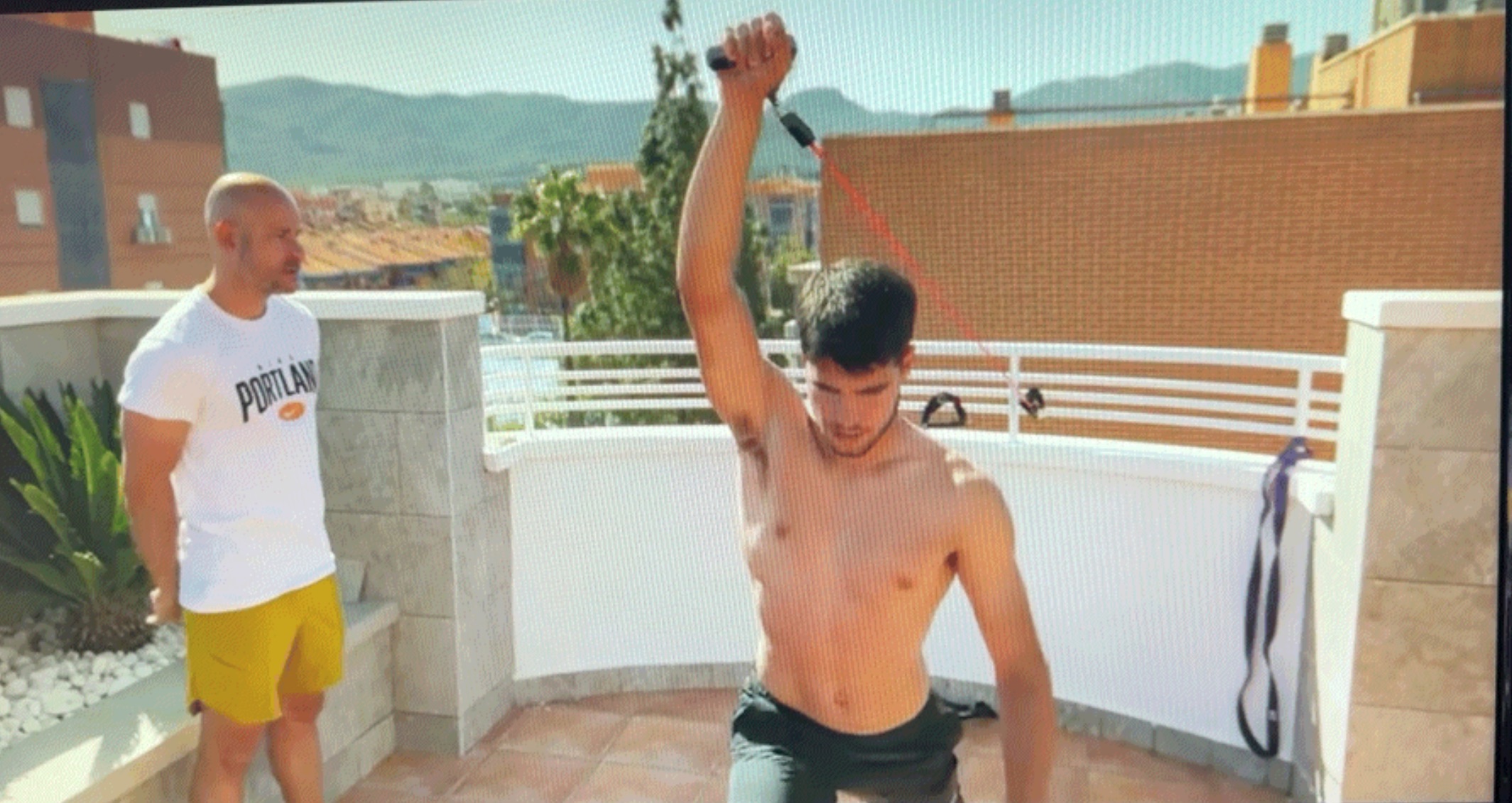This week’s featured training technique is once again drawn from the Netflix docuseries Carlos Alcaraz: My Way. In this clip, Alcaraz moves through a short yoga sequence that includes cat-cow stretches followed by child’s pose. These movements are widely recognized as staples of mobility and recovery routines, so it’s not surprising to see them incorporated into the training of one of the most explosive athletes in tennis.

The cat-cow stretch is performed from the tabletop position on hands and knees, with the wrists aligned under the shoulders and knees under the hips. The movement begins by inhaling into the cow position, arching the back, dropping the belly, and lifting the head and tailbone. On the exhale, the stretch transitions into cat, which involves rounding the spine upward, tucking the chin, and drawing the navel toward the spine. Repeating the motion in rhythm with the breath promotes spinal mobility and gently activates the core.
Child’s pose starts from a kneeling position with the big toes touching and knees either together or slightly apart. The hips are lowered back toward the heels as the arms extend forward along the floor, allowing the chest to rest between the thighs and the forehead to come down to the mat. This gentle stretch releases tension in the back and shoulders while encouraging full, calm breathing.
Cat-cow and child’s pose are excellent for tennis players because they target mobility, recovery, and spinal health, three essentials for injury prevention and performance. Cat-cow improves flexibility and control through the spine and core, which helps with rotational movement and balance on court. Child’s pose complements that by releasing tension in the lower back, hips, and shoulders, offering a gentle reset for the body after intense movement or long matches. Together, they promote body awareness and recovery. This short flow is a classic sequence for tennis players.
The only thing that surprises me about the clip is the yoga mat Alcaraz is using. It’s noticeably narrow and looks like the kind of thin, low-density mat you’d find in a beginner’s home gym. Given the level of care that goes into every other aspect of his training, I would have expected a higher-quality mat. Something with more grip, cushioning, and space to support his range of motion. It’s a small detail, but an unexpected one for a player with his resources.
I’ve used a lot of yoga mats over the years, but my favorite by far is my Jade Harmony Yoga Mat. It strikes the perfect balance between grip, comfort, and weight, which makes a noticeable difference during both strength-building poses and recovery stretches. It’s supportive without being bulky, and it provides unbeatable traction even when things get sweaty. As my old mats need replacement, this is the only one I will buy.
If there’s one takeaway from this week’s training spotlight, it’s that even the simplest movements—like cat-cow and child’s pose—can play a vital role in an elite tennis player’s routine. They’re accessible, effective, and easy to integrate into any warm-up or recovery session. And while I might question Alcaraz’s choice of yoga mat, there’s no doubting the value of the sequence itself.

JadeYoga Harmony Yoga Mat (<- Sponsored Link)
Fiend At Court participates in the Amazon Associates program and receives a paid commission on any purchases made via the links in this article. Details on the disposition of proceeds are available on the “About Fiend at Court” page.



